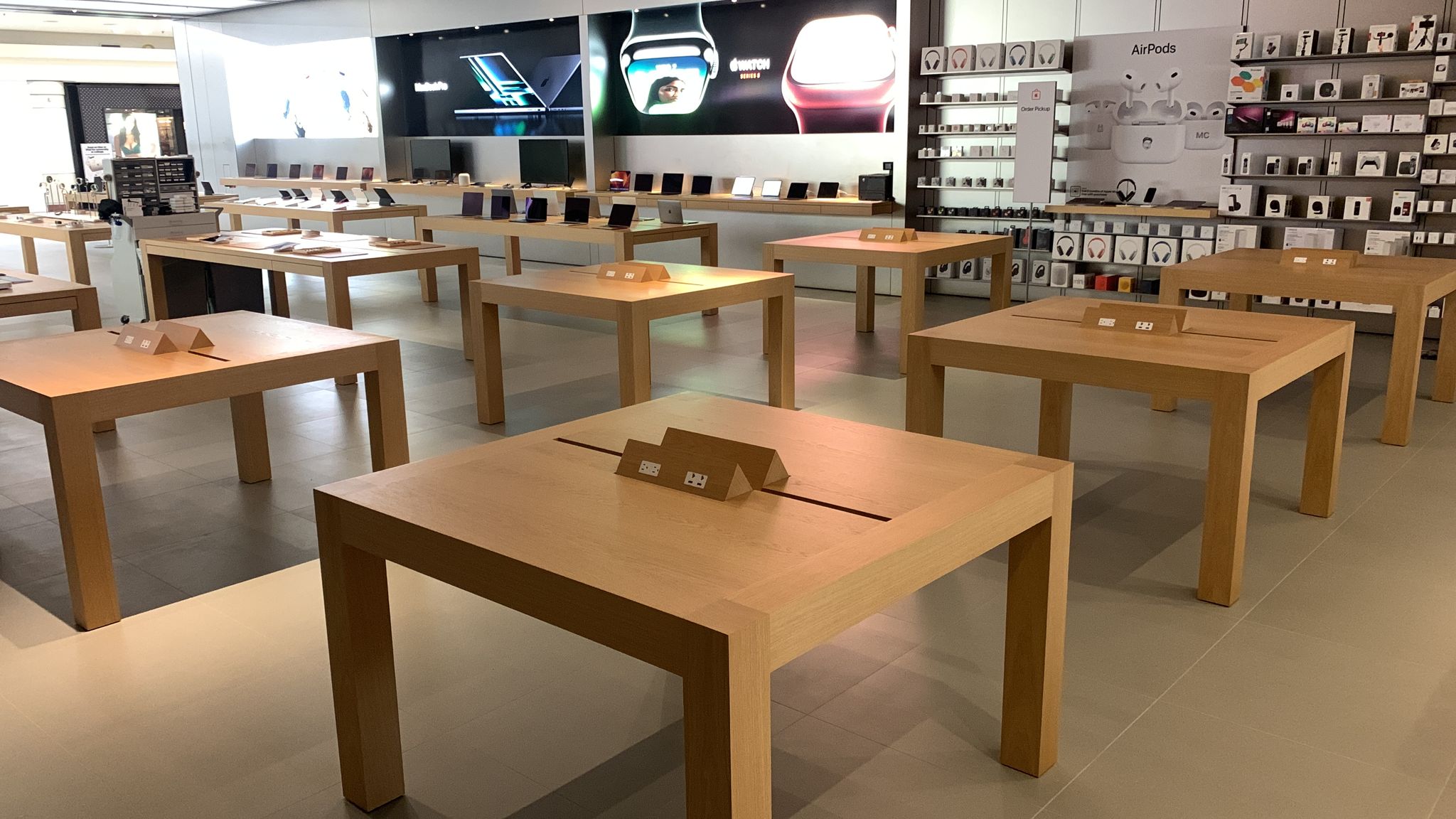High End Electronics Retailer Renovation
Constructing an electronics retail store involves meticulous planning and execution to create a high-tech, engaging, and functional shopping environment. Here’s a detailed overview of the process:
Initial Phase: Conceptualization and Planning
- Needs Assessment: The project began with consultations with the brand’s stakeholders to understand their vision, target market, and specific needs. The aim was to create a modern, interactive environment that showcases the latest technology and provides an exceptional shopping experience.
- Site Selection and Evaluation: A suitable location was chosen, ideally in a high-traffic area with ample parking and accessibility. A thorough site evaluation was conducted to assess structural requirements and potential challenges.
Phase 1: Design and Architectural Planning
- Architectural Design: Architects and interior designers developed detailed blueprints and 3D models of the store. The design included distinct areas for different product categories, such as computers, mobile devices, home entertainment, and appliances. The layout focused on creating an intuitive flow for customers.
- Material Selection: Durable and attractive materials were selected for flooring, walls, and fixtures. Choices included polished concrete, sleek metal finishes, and high-quality glass to create a modern and clean look.
- Lighting Design: A comprehensive lighting plan was developed, focusing on both ambient and accent lighting to highlight products and create an inviting atmosphere. LED lighting was chosen for its energy efficiency and ability to create dynamic displays.
Phase 2: Construction and Build-Out
- Structural Work: Initial construction involved any necessary structural changes to the building, such as reinforcing floors and ceilings, and making adjustments to the layout. This phase ensured the store had the necessary infrastructure to support the weight and power needs of electronic displays.
- Interior Build-Out: The interior construction phase involved installing flooring, wall treatments, and custom-built display units. The displays were designed to be both functional and visually appealing, allowing for optimal product presentation and customer interaction.
- Technology Integration: Modern retail technologies were integrated into the store’s design. This included high-speed internet, interactive digital displays, touchscreens, and a robust point-of-sale system to enhance the customer experience and streamline operations.
Phase 3: Specialized Areas and Equipment
- Product Displays: Specialized display areas were created for various product categories. This included interactive stations where customers could test devices, demonstration zones for home entertainment systems, and secure displays for high-value items.
- Service and Support Area: A dedicated service area was constructed for customer support and repairs. This area included a customer service desk, technician workstations, and secure storage for devices awaiting repair.
- Warehouse and Storage: An efficient warehouse and storage area were designed to handle inventory. This included shelving units, climate control systems, and security measures to ensure the safety and accessibility of stock.
Phase 4: Finishing Touches and Detailing
- Custom Fixtures and Furnishings: Custom fixtures were installed, including product display tables, shelving units, and seating areas for customers. Each piece was chosen to be both practical and visually appealing, contributing to a cohesive design.
- Decor and Signage: Branding elements, signage, and decor were added to create a cohesive and attractive retail environment. This included directional signs, product information displays, and decorative elements that reflect the store’s high-tech theme.
- Exterior Design: The exterior of the store was designed to be inviting and reflective of the high-quality products inside. This included attractive signage, clean window displays, and a well-maintained entrance area.
Phase 5: Quality Assurance and Finalization
- Inspection and Quality Control: Rigorous inspections were conducted to ensure all construction and design elements met the highest standards. Attention to detail was crucial to ensure the store was ready for customers.
- Staff Training and Soft Opening: Before the official opening, staff were trained on the store’s layout, technology, and customer service standards. A soft opening was held to test the store’s operations and make any necessary adjustments.
Completion and Grand Opening
- Grand Opening Event: The project culminated in a grand opening event, attended by key stakeholders, community members, and potential customers. The event showcased the store’s modern design, wide range of products, and customer-friendly layout.
- Customer Experience: The completed electronics retail store offered a modern and enjoyable shopping experience, with its clean design, well-organized displays, and interactive technology enhancing the overall customer journey.
The construction of the electronics retail store was a successful project, resulting in a modern, stylish, and functional retail space that effectively showcases the products and enhances the shopping experience for customers.

